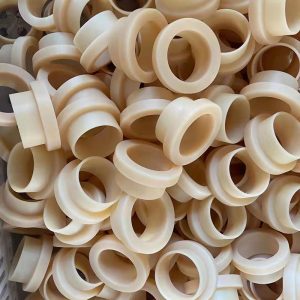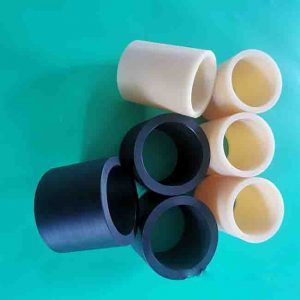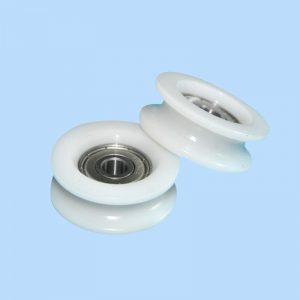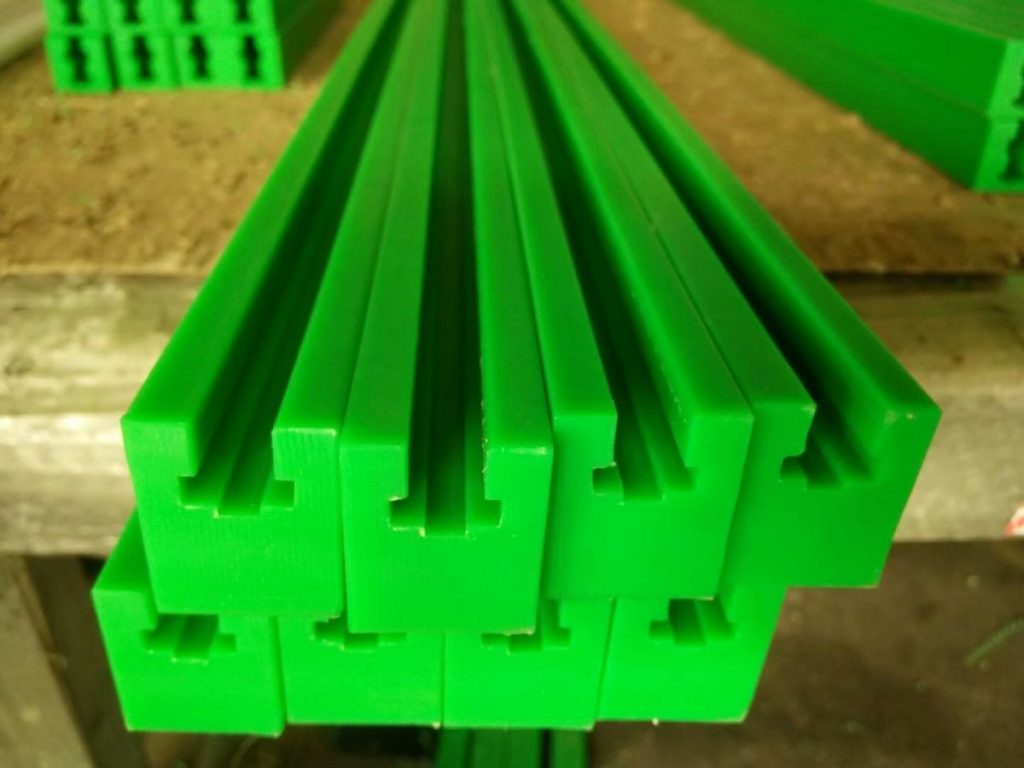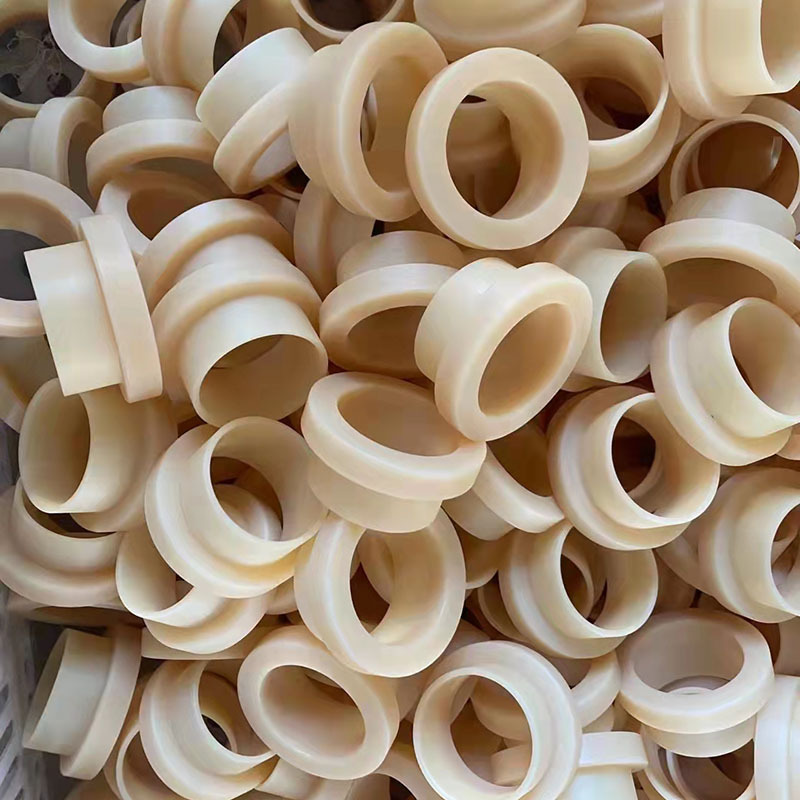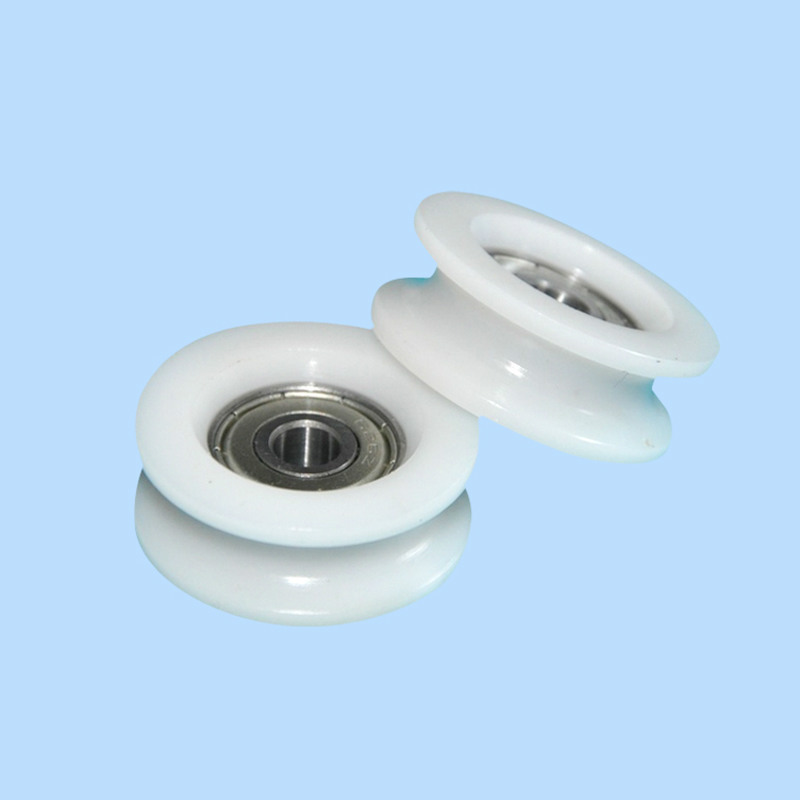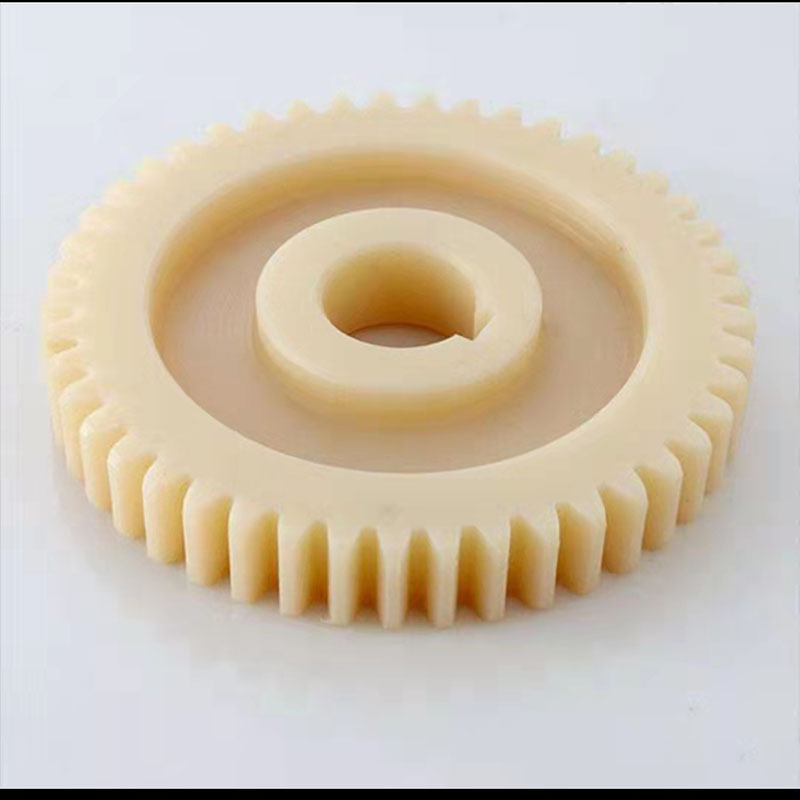The production process of UHMWPE (Ultra-High Molecular Weight Polyethylene) machined parts involves specialized techniques due to the material’s unique properties—extremely high molecular weight, low melt flow, and high abrasion resistance. Below is a step-by-step breakdown of the manufacturing process:
1. Material Selection & Forming
- Raw Material: UHMWPE is supplied as compression-molded sheets, rods, or blocks (since it cannot be melted and injection-molded like HDPE).
- Manufacturing Methods for Blanks:
- Compression Molding: UHMWPE powder is heated and pressed into sheets or blocks under high pressure.
- Ram Extrusion: Used for producing rods or tubes by forcing melted UHMWPE through a die.
2. Machining UHMWPE Parts
Due to its high viscosity and low thermal conductivity, UHMWPE requires specific machining techniques:
A. Cutting & Sawing
- Tools: Carbide-tipped or high-speed steel (HSS) blades with sharp, polished edges (to prevent material sticking).
- Methods:
- Band Saws / Circular Saws – For rough cutting sheets or blocks.
- Waterjet Cutting – Preferred for complex shapes (no heat generation).
- Laser Cutting (Limited Use) – Possible but may cause localized melting.
B. Drilling & Milling
- Tool Requirements:
- Low rake angle (to reduce friction).
- High cutting speed with low feed rate (prevents material deformation).
- Cooling: Air or water cooling is recommended to avoid overheating.
C. Turning (Lathe Work)
- Used for producing cylindrical parts (e.g., bushings, rollers).
- Tool Tips: Carbide inserts with sharp edges to avoid material “gumming up.”
D. CNC Machining
- Suitable for high-precision parts (e.g., medical implants, wear strips).
- Key Considerations:
- Minimize heat buildup (prevents warping).
- Use sharp, polished cutters (reduces burrs).
3. Finishing Processes
- Deburring: Manual trimming or tumbling to remove sharp edges.
- Surface Smoothing:
- Sanding (with fine-grit abrasives).
- Polishing (for low-friction applications).
- Flame Treatment (Optional): Improves adhesion for bonding/painting.
4. Quality Control & Testing
- Dimensional Checks: Ensures tolerances are met (UHMWPE can expand/contract slightly).
- Wear & Impact Testing: Validates performance in real-world conditions.
5. Assembly & Post-Processing
- Bonding: UHMWPE is difficult to glue, so mechanical fastening (screws, rivets) or special adhesives (e.g., epoxy for plastics) are used.
- Welding (Limited Use):
- Hot Gas Welding – Possible but challenging due to low melt flow.
- Butt Fusion Welding – Used for joining UHMWPE pipes.
Key Challenges in UHMWPE Machining
- Heat Buildup → Can cause warping or melting.
- Material Flexibility → Requires sharp tools to avoid deformation.
- Low Thermal Conductivity → Cooling is critical.
Applications of Machined UHMWPE Parts
Medical Implants (joint replacements).
Wear Strips & Liners (conveyors, chutes).
Bushings & Bearings (low friction, self-lubricating).
Marine Components (dock fenders, boat bumpers).

